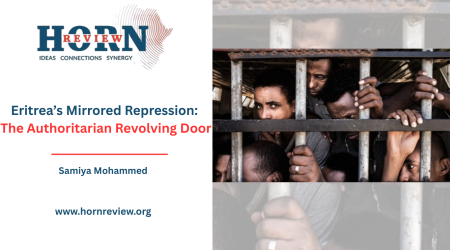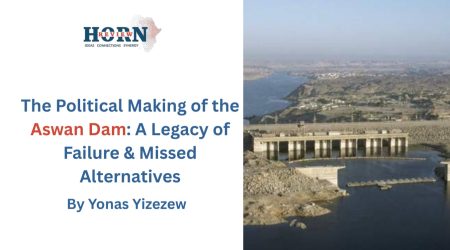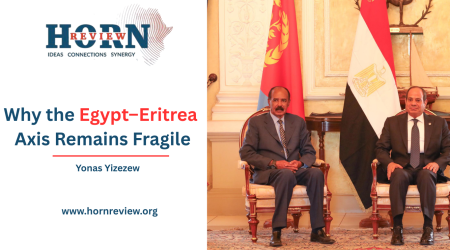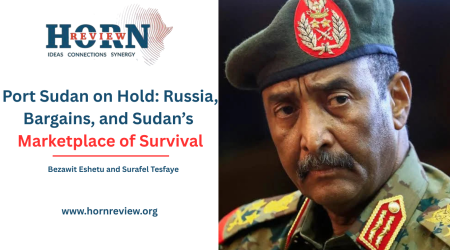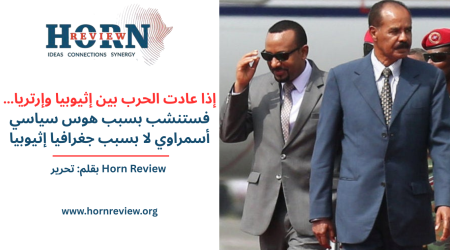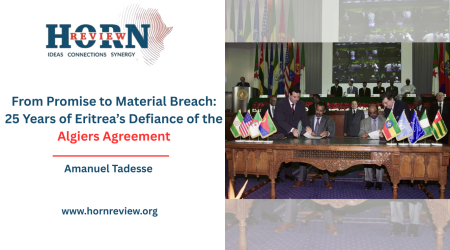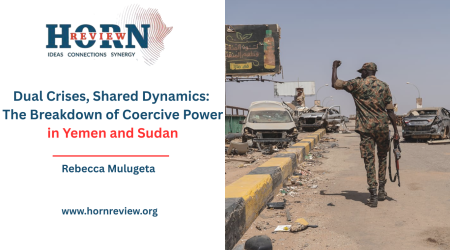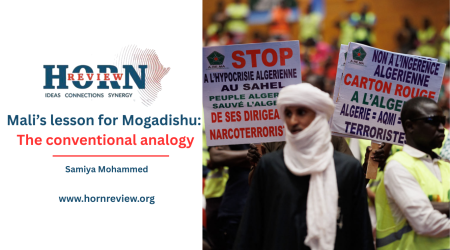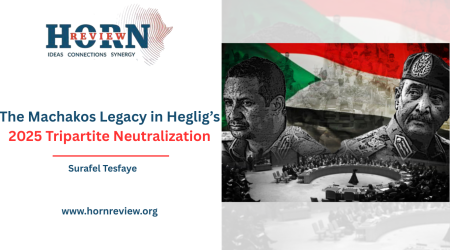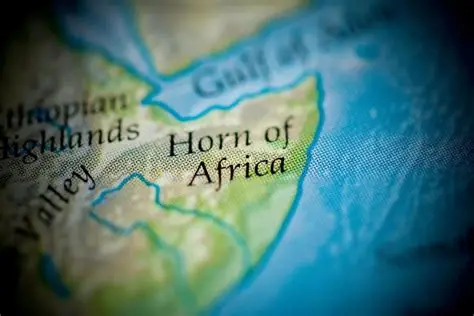
7
Aug
Narrative Sovereignty: Foreign Media, Soft Power, and the Politics of Perception in the Horn
The Horn of Africa, a crucible of ancient civilizations and enduring conflicts, remains a pivotal nexus of global strategic interest. Beyond its geographic and resource-driven importance, the region is now a fiercely contested arena for a more intangible asset: narrative control. The adage “who controls the story controls the stakes” has never been more pertinent.
The international media landscape in the Horn of Africa is significantly shaped by a few major state-affiliated broadcasters, each projecting narratives aligned with their respective national interests and foreign policy goals.
International broadcasters, backed by state interests, project carefully curated narratives. Al Jazeera, partly funded by the Qatari government, presents a complex case. While it asserts editorial independence, the network consistently faces accusations of pro-Qatari bias and of functioning as an instrument of Qatar’s foreign policy objectives. Its stated mission often involves offering an “alternative” perspective to dominant Western media, frequently centering Palestinian viewpoints in Middle Eastern coverage and commendably highlighting underreported African crises and development challenges. During the Tigray war, Al Jazeera provided extensive coverage, with independent analysis suggesting its framing often favored the Tigray People’s Liberation Front (TPLF) and emphasized humanitarian dimensions and alleged atrocities (Plaut, 2022). The Qatari strategy in the Horn, reflected through Al Jazeera, appears to involve positioning Qatar as a significant regional influencer, a potential mediator in conflicts, and a champion of certain causes, thereby challenging established Western or rival Arab narratives. The focus on humanitarian issues builds soft power, while its political reportage can align with Qatar’s diplomatic orientations. The reported blocking of Al Jazeera’s websites in Ethiopia, allegedly due to its coverage of protests, signals the perceived potency and political weight of its narratives.
China’s CGTN, particularly CGTN-Africa, operates with a clearer mandate to bolster Beijing’s image and advance its Belt and Road Initiative. Following significant investment, CGTN-Africa aims to provide a “comprehensive view of the continent,” elevate African perspectives (as defined through a Sino-African lens), strengthen Sino-African relations, and positively reshape China’s global image. Its programming promotes themes of “win-win cooperation” and “non-interference,” aiming to create a favorable environment for China’s expanding economic and political footprint. CGTN’s coverage of the Tigray conflict, for instance, initially mirrored the Ethiopian government’s “law enforcement operation” narrative, later shifting to themes of reconciliation that were generally less critical of the federal government’s stance. Chinese state media, actively works to influence perceptions in Africa, emphasizing Beijing as a provider of resources and a model for development, often through content-sharing agreements with local African outlets (ACME, 2025).
TRT World, Turkey’s state-run international broadcaster, serves as a key component of Ankara’s expanding public diplomacy and soft power projection. Its mission is to present global events from a Turkish perspective and project Turkey’s growing influence. However, TRT World has faced substantial criticism regarding its editorial independence, with numerous commentators and some scholars labeling it a propaganda outlet for the Erdoğan administration. These concerns culminated in the U.S. Justice Department requiring its Washington operation to register as an agent of the Turkish government. The channel actively promotes Turkey’s humanitarian initiatives in Africa and articulates Ankara’s vision for regional reconciliation and a more equitable global order, often under Turkish leadership or influence. Turkey’s soft power strategy in Africa, which has gained significant importance since 2005, leverages humanitarian aid, economic relations, and diplomatic initiatives to deepen its influence and establish itself as a permanent actor on the continent (Özkan & Güler, 2022).
These international outlets, while serving distinct national agendas, sometimes converge in critiquing Western influence, yet fundamentally compete to shape the regional narrative to their sponsor’s advantage. Tactical alignments – such as the promotion of South-South cooperation or critiques of U.S. hegemony – may mask deeply divergent interests: for instance, China’s principle of “non-interference” often contrasts with Turkey’s more assertive and interventionist approach, or Qatar’s active mediation efforts in regional conflicts.
Furthermore, these broadcasters frequently employ humanitarian crises or development successes as primary framing devices. Such narratives, being less overtly political, are often more palatable to international audiences and can effectively build soft power. Yet, this soft power can be leveraged to mask or support more direct geopolitical or economic interests of their state sponsors. The geopolitical utility of these outlets also lies significantly in selective amplification and silence – what they choose not to report or to downplay, particularly concerning the actions or policies of their sponsoring states or allied nations, becomes a key mechanism of narrative control.
Dictating the Story, Managing the Stakes
The battle for narrative dominance has profound geopolitical consequences. Controlling the story allows actors to mold public opinion, sway policy, legitimize or delegitimize entities, and mobilize populations. This contest creates a stark divergence between reality and the narratives propagated by state-sponsored media. Disputes over resources or controversial agreements become international flashpoints, with competing media narratives escalating tensions to achieve outcomes favorable to their state sponsors.
Ultimately, the constant barrage of biased information from powerful international broadcasters fosters widespread public cynicism, eroding trust in all media institutions and making populations more susceptible to disinformation. This toxic media environment was notably evident during the Ethiopian conflict, where state-aligned outlets, diaspora networks, and social media actors created echo chambers that deepened polarization and made peace-oriented narratives nearly impossible to sustain (Rift Valley Institute, 2022).
In conclusion, navigating the narrative labyrinth in the Horn of Africa demands more than just a recalibration of who tells the region’s stories – it requires a fundamental restructuring of how those stories are produced, disseminated, and contested. Genuine narrative sovereignty cannot be achieved through a mere shift in external influence; it must be built from within, anchored in independent journalism, informed citizenry, and ethical international partnerships. The future of the Horn hinges not only on resolving political and security challenges but also on cultivating a resilient information ecosystem that upholds truth, fosters inclusivity, and enables self-representation. Only by empowering local voices, defending media freedoms, and resisting the instrumentalization of information for narrow geopolitical ends can the region chart a path toward democratic maturity and lasting peace.
By Tsega’ab Amare, Researcher, Horn Review
References
- ACME. (2025). China flexes its media muscle in Africa – encouraging positive headlines as part of a soft power agenda. African Centre for Media Excellence. https://acme-ug.org/2025/02/12/china-flexes-its-media-muscle-in-africa-encouraging-positive-headlines-as-part-of-a-soft-power-agenda/
- Özkan, M., & Güler, S. (2022). The Rise of Turkey’s Soft Power in Africa: Reasons, Dynamics, and Constraints. International Journal of Political Studies. https://www.researchgate.net/publication/363154335_The_Rise_of_Turkey%27s_Soft_Power_in_Africa_Reasons_Dynamics_and_Constraints
- Pericoli, A., & Donelli, F. (2024). Qatar’s foreign aid and political strategies in the Horn of Africa: The case of Somalia. Global Policy, 15(1), 53-65. https://www.ideas.repec.org/a/bla/glopol/v15y2024i1p53-65.html
- Plaut, M. (2022). Understanding Ethiopia’s Tigray war. Hurst & Company. https://www.hurstpublishers.com/book/understanding-ethiopias-tigray-war/
- Rift Valley Institute (RVI). (2022). Broadcasting hate: The digital war in northern Ethiopia. RVI Usalama Project Report. https://riftvalley.net/publications/broadcasting-hate-digital-war-northern-ethiopia

